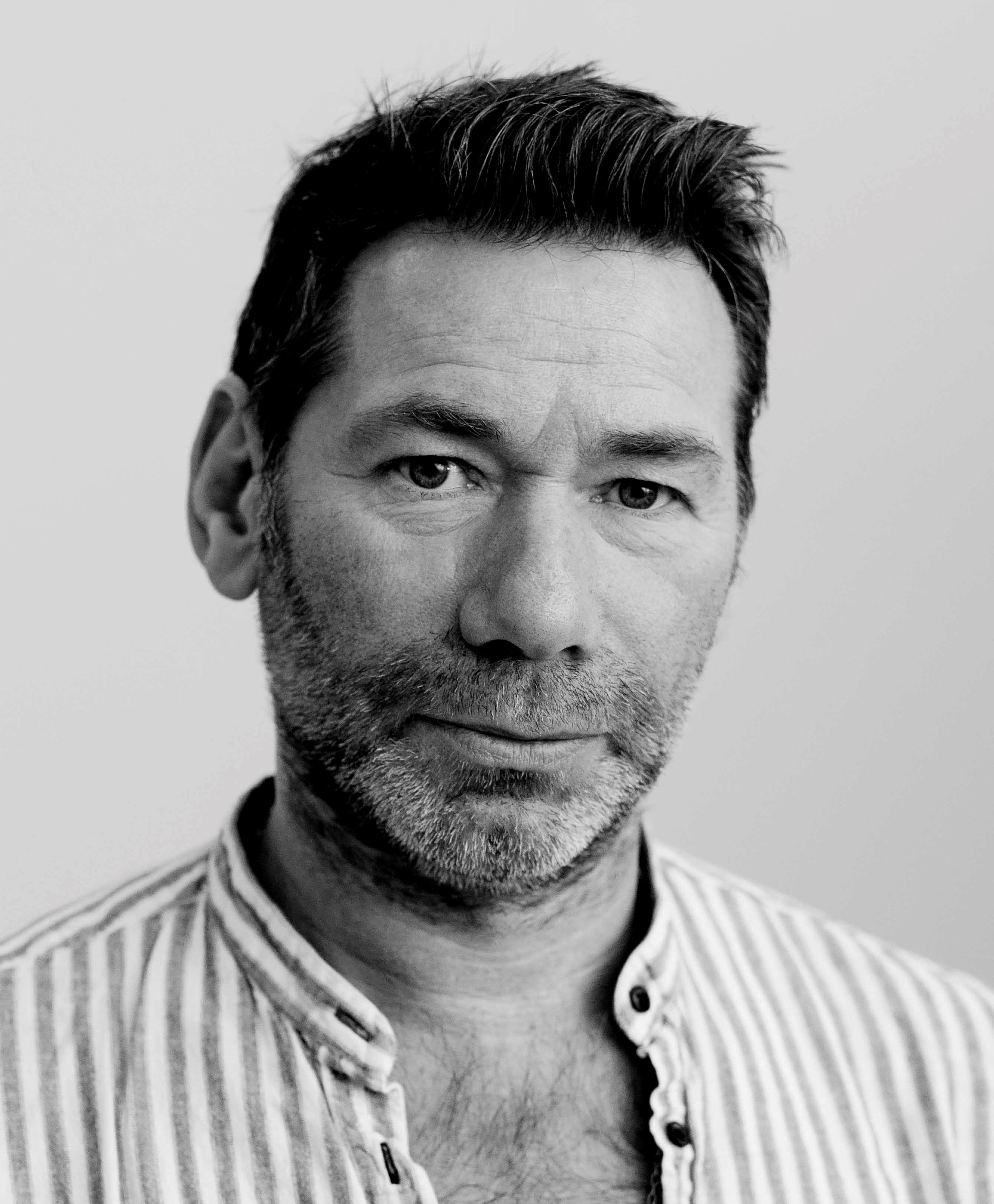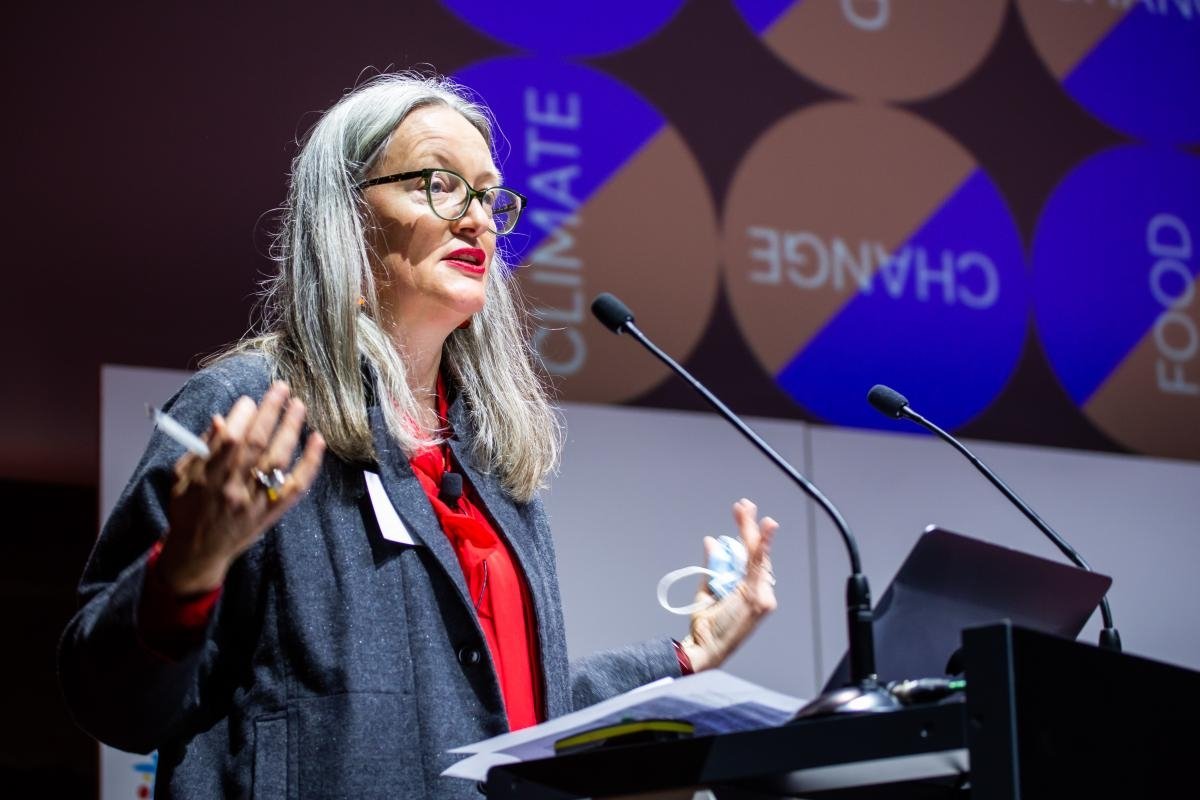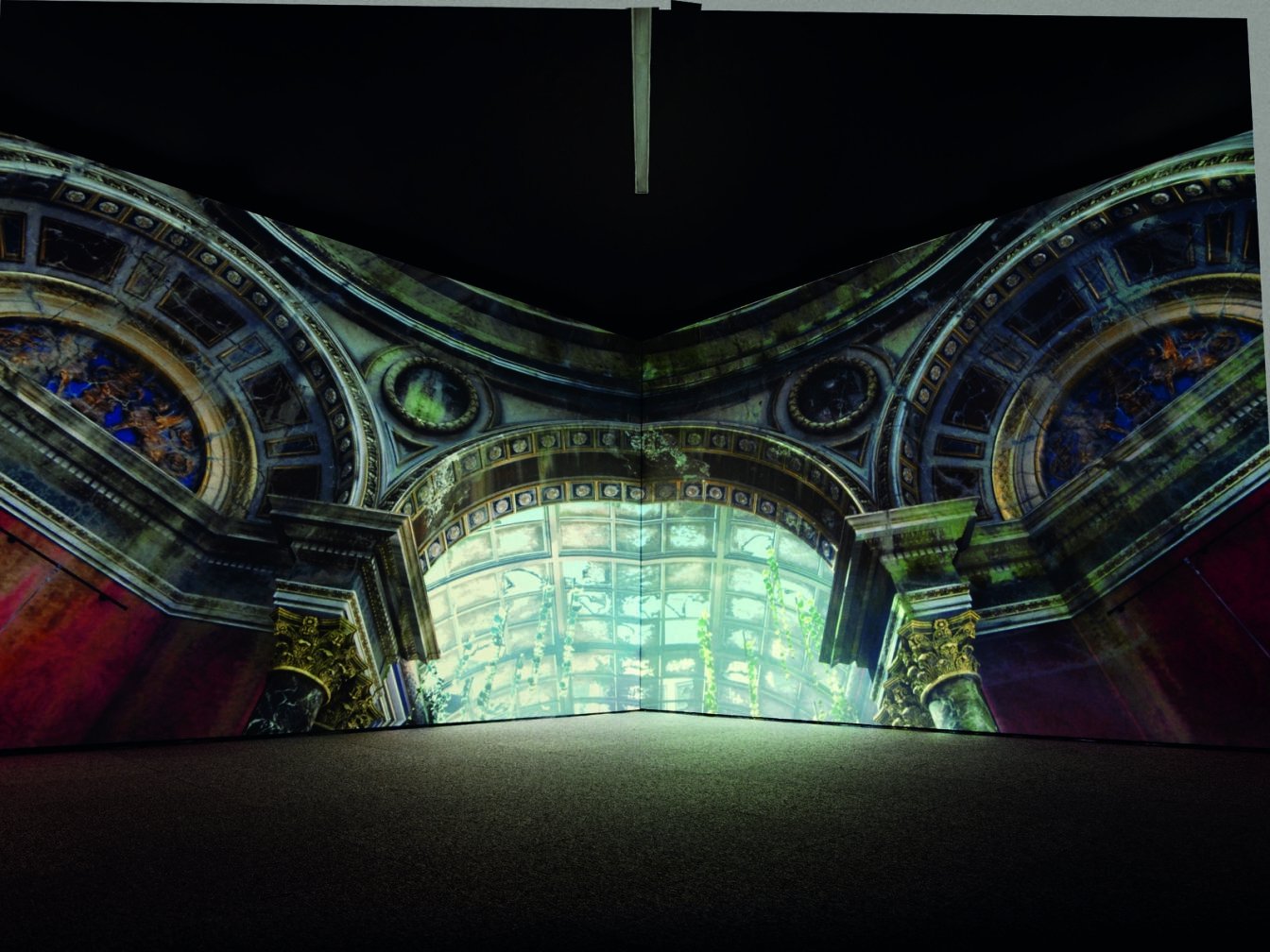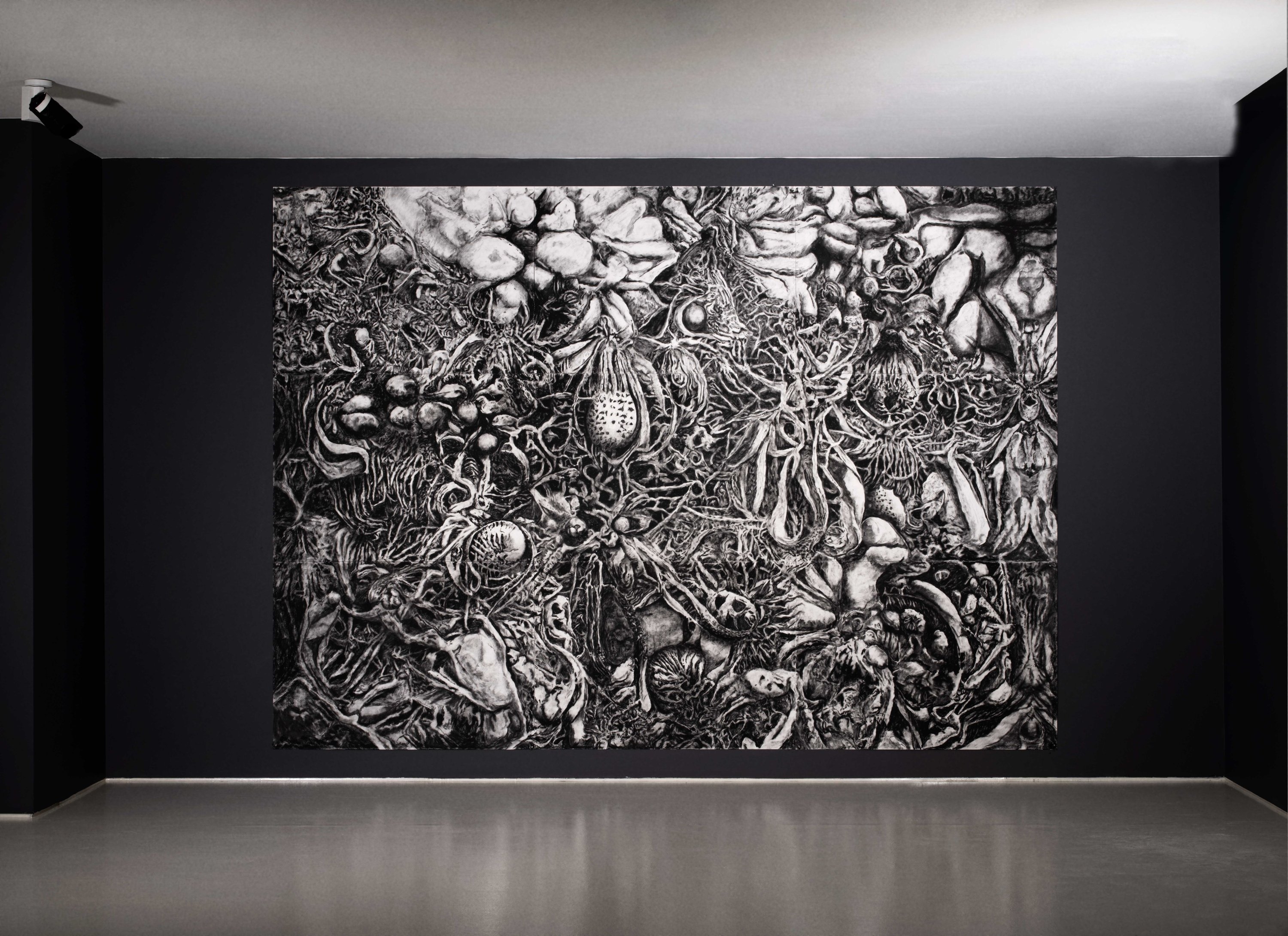© Turkuvaz Haberleşme ve Yayıncılık 2025
Throughout history, nature has been perceived in various ways by humanity. In the works of American Romanticist Albert Bierstadt, a member of the Hudson River School, nature is portrayed as the artistic and philosophical concept of the sublime. During the realism era, it was often discussed as an indifferent force that humanity needed to deal with.
However, amid the diversity of interpretations of nature, there seems to be a common thread among artists. That is the recognition of nature's rhythmic and harmonious order, akin to the precision of a clock within its own framework.
Contemporary British artist Mat Collishaw, with his exhibition "Arrhythmia," skillfully captures the irregular and arrhythmic aspects of nature, weaving them into a narrative of philosophical and periodical binary oppositions. The exhibition, hosted at the Borusan Contemporary's Haunted Mansion building nestled on the coast of Bosporus, invites visitors to an interdisciplinary visual spectacle that merges art history, culture and science.

In this context, the title of the exhibition serves as an introductory word to understanding the central themes. "Arrhythmia" fundamentally refers to an abnormal heart rhythm or irregular heartbeat. Collishaw draws attention to a different kind of disruption, suggesting the creation of a third space where science and art collide, a space pertaining to eschatological times.
Mat Collishaw is a British contemporary artist known for his innovative and often provocative work that spans various mediums, including photography, sculpture, installation and digital art. Collishaw gained prominence in the early 1990s as one of the key members of the Young British Artists (YBA) movement, including artists like Damien Hirst and Tracey Emin.
During the press preview meeting, the curator of the exhibition, Alice Sharp, primarily emphasized the relationship between human beings and nature. She pointed out the limitations of rationality and theory when it comes to humanity's understanding of nature, advocating for a more sensory-based approach. In doing so, she echoed some transcendental concepts. According to Sharp, Collishaw's created world parallels Emmanuel Kant's approach to the relationship between nature and science.

"It is tomorrow to be heard today; it is like a dreamlike quality it whispers to me," she described the exhibition.
According to Sharp, the exhibition is, in a sense, a plea from nature – a call to remind humanity of its place within the natural order. The meticulously designed video installations are so close to reality that they draw viewers into their realms within seconds of viewing. You find yourself transported into these environments, carried away by the visuals.
This video installation begins with four plants inside Wardian cases and gradually zooms in on a mesmerizing forest above the sea. Wardian cases were historically used for transporting and preserving live plants over long distances for the first time. After the plant imagery, we witness the captivating beauty of a natural scene, with flowing rivers and blooming flowers. Suddenly, we are confronted with a burnt and barren forest beneath a grayed-out sky, where all organisms that once thrived in the ecological system have vanished.
This imagery is followed by the reappearance of Wardian cases, creating an endless cycle of destruction and rebirth akin to the continuous struggle between night and day.
Collishaw chose Samuel Barber's "Adagio for Strings" to accompany this artwork. During the preview, the Borusan Philharmonic Orchestra performed the piece live. The profound melancholy of "Adagio for Strings," combined with the visuals of destruction, leaves a powerful impact on the audience.

In this installation, consisting of a four-channel video installation placed horizontally on two walls, we witness nature reclaiming itself, starting to conquer the physical space of the National Gallery, one of the most important museums in the U.K. and possibly the world. The overpowering force of nature's reclamation is, in a way, a form of revenge. Vines appear on the museum's walls, shoots sprout from the floors, and priceless paintings are left to their fate. We may approach a time when humanity has entirely disappeared – again, a kind of eschatological era. Therefore, we see the National Gallery as a symbol of hubris, especially given recent incidents of art theft, which makes Collishaw's choice of this museum as a backdrop incredibly prescient.
For Collishaw, the theme of this artwork is about the misalignment of priorities. It serves as a memento mori, reminding us of how humans collect ephemeral objects aimlessly. It pays homage to classical vanitas paintings, paintings that often contain a collection of objects that symbolize the transience and impermanence of life and, at the same time, critiques human hubris, our tendency to collect and possess objects recklessly.

Collishaw's work in this piece is inspired by the Bosporus. Using artificial intelligence, he transforms Ernst Haeckel's illustrations of marine creatures and Albrecht Dürer's iconic woodcut, "The Four Horsemen of the Apocalypse," depicting the moment of judgment. According to Collishaw, nature is already undergoing an apocalypse. Therefore, he creates an original vision of the apocalypse by combining Dürer's terrifying imagery with Haeckel's forms.
Collishaw's signature work, a striking installation in the zoetrope format, highlights the excessive proliferation of jellyfish species beyond their natural rhythms. He compares these invasive creatures to an octopus, symbolizing the intelligence of nature. Collishaw attempts to create a symbolism where the jellyfish figures represent conformists who follow the majority, while the octopus in the center symbolizes uniqueness and subjectivity.
Additionally, an optical illusion is created here. We perceive the jellyfish as being free, with the octopus trapped among them, when, in fact, it's the opposite.
This installation features flashing lights, creating a stimulating atmosphere. Maybe Collishaw aims to warn individuals here, perhaps hoping they will break free from this misdirection, leading the viewers to contemplate how much free will we truly possess.
Mat Collishaw's exhibition delves into the intricate dynamics of our connection with nature, particularly in an era where humanity often approaches it with aggression amid ongoing ecological challenges. Rather than offering solutions to these issues, Collishaw and Sharp accentuate them, making them highly visible and tangible. Consequently, every visitor to the exhibition receives a message of their own, one that contributes to the search for solutions.
Yes, this is an arrhythmia – a disruption experienced by nature. Bearing witness to this destruction and disappearance creates an arrhythmic experience that may induce anxiety in visitors, compelling them to reflect on this relationship.
The exhibition will be open for visitation at Borusan Contemporary's Haunted Mansion until Aug. 18.
